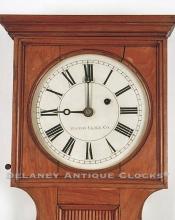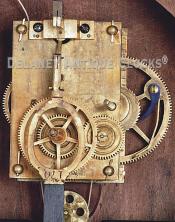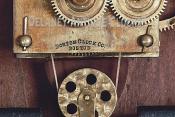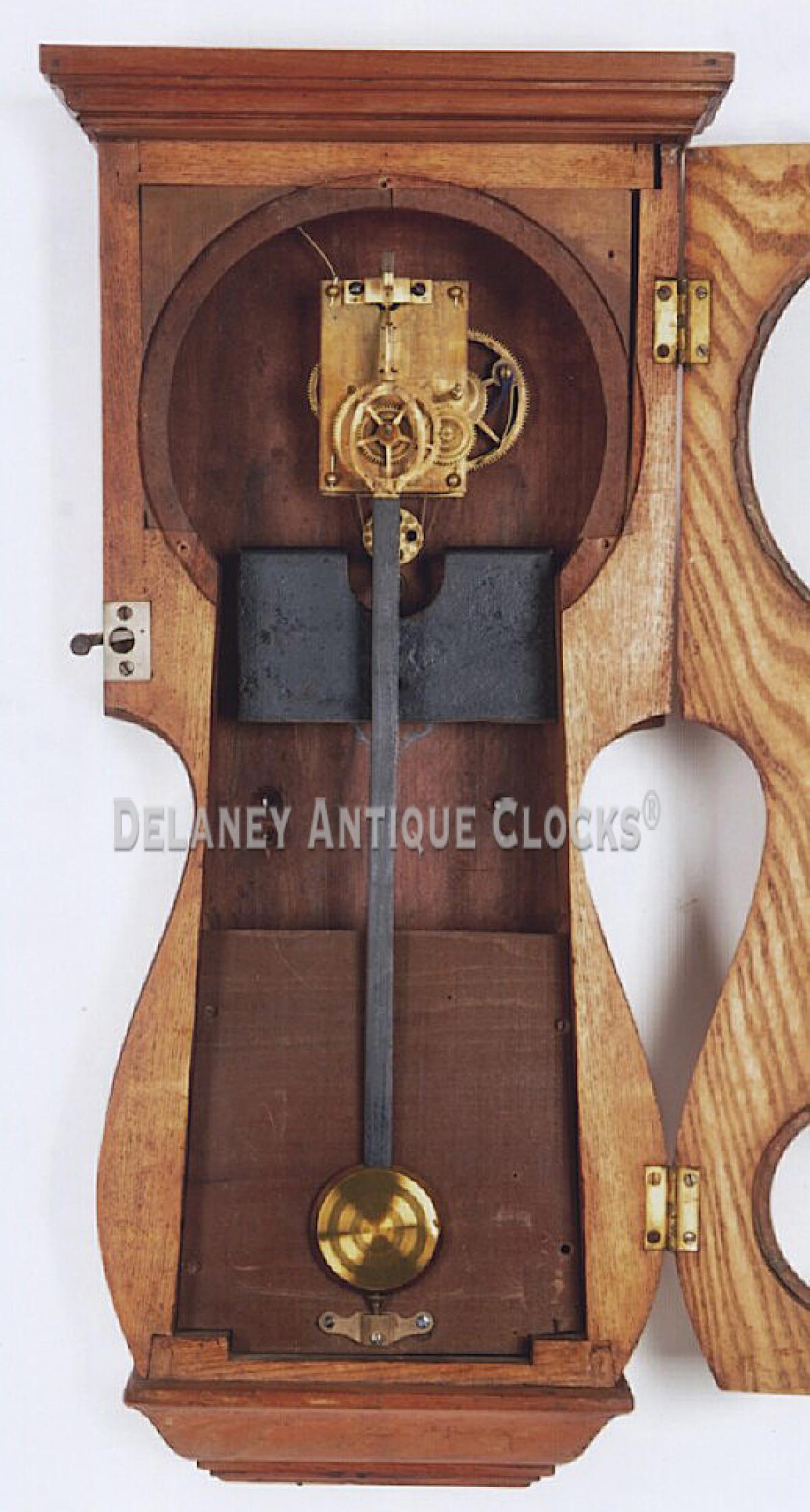Boston Clock Co., Boston, Massachusetts. No. 4. A wall timepiece. 2457.
This is a very unusual model in terms of its case style and may very well be the earliest clock known by the manufacturer. It is a diminutive size and features an interesting form. The case measures 26 inches long, 12 inches wide at the upper molding, and 5.5 inches deep. It is constructed in ash and retains its original finish. Both openings in the case are fitted with glass. The front of the case is a door that allows one access to the dial and internal bits.
The dial is painted on tin and measures 8 inches in diameter. It is signed in this location “Boston Clock Co.”
The movement is brass and is die-stamped by the Maker on the lower section of the front plate. It is also die-stamped on the bridge and on the front plate number “4.” This suggests a very early production date for this Company. The movement is weight driven and is designed to run for eight days on a full wind. The weight is cast iron and original to this clock. The pendulum features a wooden rod and a brass-covered bob. The outstanding bob is wonderfully decorated with a concentric ring-turned design. The motion of the pendulum bob can be viewed through the lower opening in the front of the case.
This wall clock was made circa 1884.
Inventory number 2457.
The Boston Clock Company was organized by Joseph H. Eastman, James Gerry, and others on May 29, 1884. It was actually located in Chelsea, Mass. This company was formed as the successor to Joseph H. Eastman's Harvard Clock Company 1880-1884. Joseph H. Eastman became the manager of this new firm. This company failed in 1895, and in March of the same year, Joseph Eastman and others tried to revive it as the Eastman Clock Company. This new firm lasted only one year and eventually became the Chelsea Clock Co. in 1897.
The Boston Clock Company manufactured clocks predominately in the style of various crystal regulators, carriage clocks, and other mantel clocks in marble cases. These clocks often featured a compensating balance wheel spring-powered movement. A small number of weight-driven wall clocks were also produced. Most of which were similar in form to the Howard model No., 5 & No., 70 and the Chelsea No., 1.
Boston Clock Company clocks were sold through salesrooms that included Smith & Patterson in Boston, G. S. Lovell & Co in Philadelphia and Wm. H. Atwater in New York.












